“Dance, even if you have nowhere to do it but in your own living room.” This may have been Baz Luhrmann’s instruction to “the class of ’97” in his hit Everybody’s Free ( To Wear Sunscreen), but the advice feels written for 2020.
As the pandemic closed studios across the country, dancers – amateur and professional alike – found ways to keep moving. Or to “keeeeeep dancing”, as Tess Daly and Claudia Winkleman have been telling Strictly Come Dancing audiences since October... and forever.
The BBC show refused to lower its own glitter ball, adapting its usual filming protocols to keep dance – and some much needed glitz – on our screens.
There have been only intermittent live audiences, the judges have all socially distanced – Bruno from as far away as the US – and contestants have formed bubbles with their professional dance partners, with many of the pros living away from the rest of their family for the duration of filming.
The show looked in early danger when contestant Nicola Adams had to drop out after her partner Katya Jones tested positive for coronavirus, and judge Motsi Mabuse was forced to self-isolate. But somehow, we’ve made it to finals week – perhaps because others paved the way for dancing through adversity.
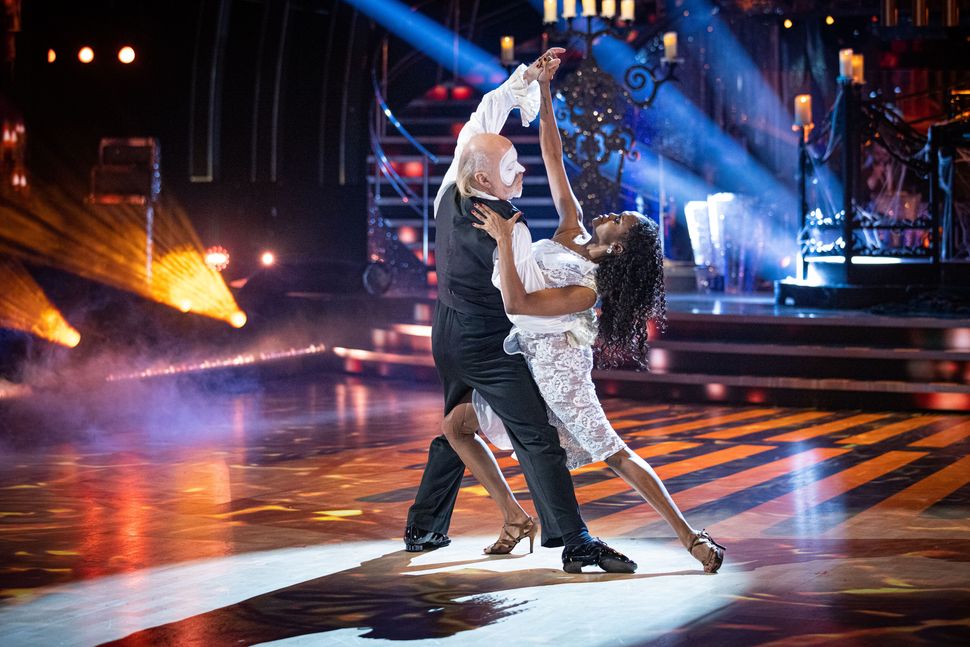
Francesca Velicu, first artist at the English National Ballet (ENB), is accustomed to spending up to eight hours a day rehearsing, so studio and theatre closures in March came as a shock to the system.
“Suddenly not having a space to do all of these things was very challenging,” she tells HuffPost UK. “I guess each dancer adapted in their own way to keep a healthy body and mindset.”
ENB’s studios closed in March and didn’t begin their phased reopening until July. Velicu tried to remain positive, by accepting what she could and couldn’t do in the limited space of her London flat.
“The radiator was my best friend as a substitute to the ballet barre,” she says. “I spent a lot of time working on things that I wouldn’t normally have the time for and I found Pilates, workouts and running outside really helpful.
“It was really interesting for me to find different ways to keep in shape, I think this time off really proved to us that there is always more than one way to go. With ambition and positivity, we can achieve many things.”
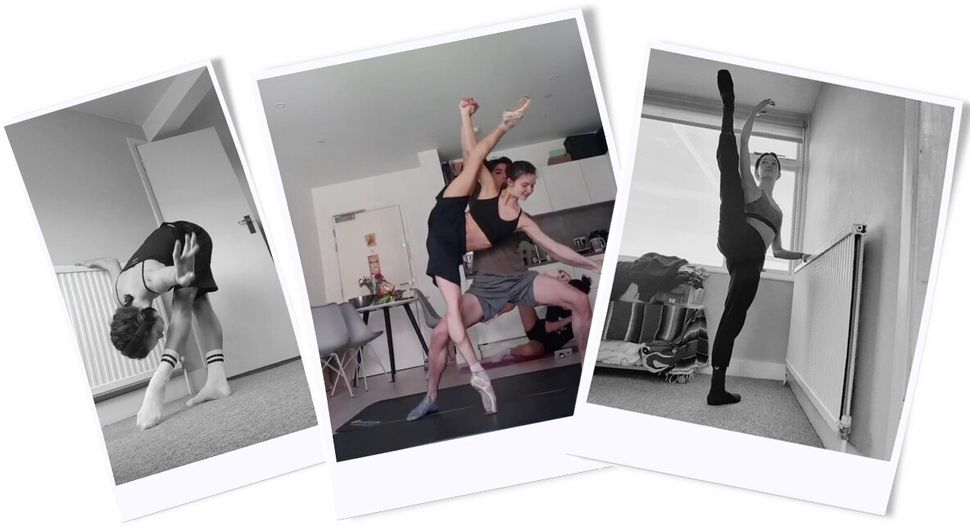
Amateur dancers also practised at home in their thousands as their favourite studios swiftly moved classes online, via zoom sessions and Instagram live tutorials.
School of SOS, the nationwide dance school chain adapted from the London-based studio Seen On Screen, was among the first to pivot. The teachers – famed for bringing Beyoncé dance workshops to the masses – hosted their first Instagram live class in mid-March, before the official lockdown order. It was a “sort of test”, they say, to see how the classes might adapt if studios were forced to close – and it worked.
Due to demand, they added a few more Instagram classes the following week, increasing to a seven-day online timetable by April. At the peak of the first wave, the 60-minute sessions had 500 people joining live.
“It was incredible, and so unexpected. It felt like we were riding a tidal wave - the demand was explosive,” says the company’s founder, Bonnie Lister Parsons.
“Even Instagram noticed when they featured SOS in their timetable of the top IG Lives in the world. The creative director contacted me personally, which was surreal – I thought he was joking!”
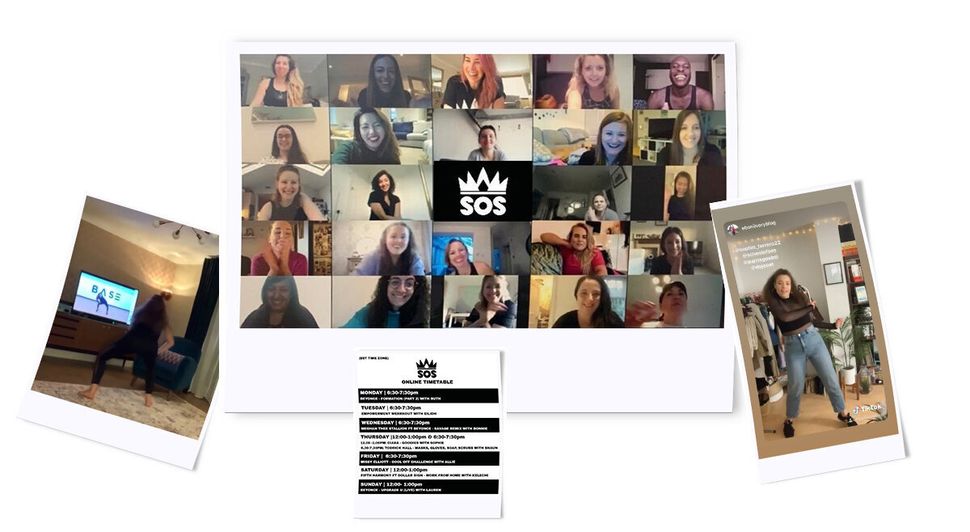
The pandemic made SOS a global company overnight, she adds. “Because everything went online so fast, geographic distance became irrelevant, which meant I could bring in my dance network from across London, New York and Los Angeles to create a ‘super timetable’. That was so cool.”
One highlight was inviting her friend, LA-based Randall Watson, to guest teach a special J.Lo class – Watson had performed alongside Jennifer Lopez at the Super Bowl in February 2020.
Another LA-based dancer, Allie Laliberte, who’s danced alongside Drake, Rihanna, Little Mix, Shawn Mendes and Rita Ora, now teaches for the company every Thursday, as part of its weekly digital timetable. “That kind of global operation being ‘the norm’ just wouldn’t have happened pre-lockdown,” says Lister Parsons.
You only had to join one the live classes early in the pandemic to see the positive impact they’re having on dancers’ mental health. Comments such as “thank you, I really needed this today” were the norm, posted by grateful participants (often with a series of heart emojis).
“Mostly, it felt like our classes had become a lifeline for so many – something to look forward to and a place to connect with a worldwide community who supported them everyday when in reality, everyone was isolated at home,” says Lister Parsons.
As it became clear that studios wouldn’t be reopening any time soon, teachers across the country went above and beyond to get their classes online –especially those catering for kids, who knew parents were desperate for ways to occupy their offspring during school closures.
Strictly’s own Oti Mabuse – reigning champion and finalist again this year with Bill Bailey – even lent a hand, offering free dance classes for children online.
Charlotte Searle, who usually runs her Dance Fit classes from a church hall and a school hall in Manchester, taught classes on Zoom during the first national lockdown, but the set-up wasn’t ideal.
“It felt weird and there were lots of teething problems,” she says. “Like getting the sound better, getting the sound and picture to be as in sync as possible and adjusting my choreography to be less travelling, no partner work and I had to pay one of my kids to do the modified version next to me.”
Once exercise classes were permitted again, Searle organised to teach her classes outdoors in a private playground. It seemed the best option for her clients, some of whom were hesitant about exercising indoors. She bought new speakers and measured three metres from herself at the front, then kept all participants at least two metres apart, facing forward.
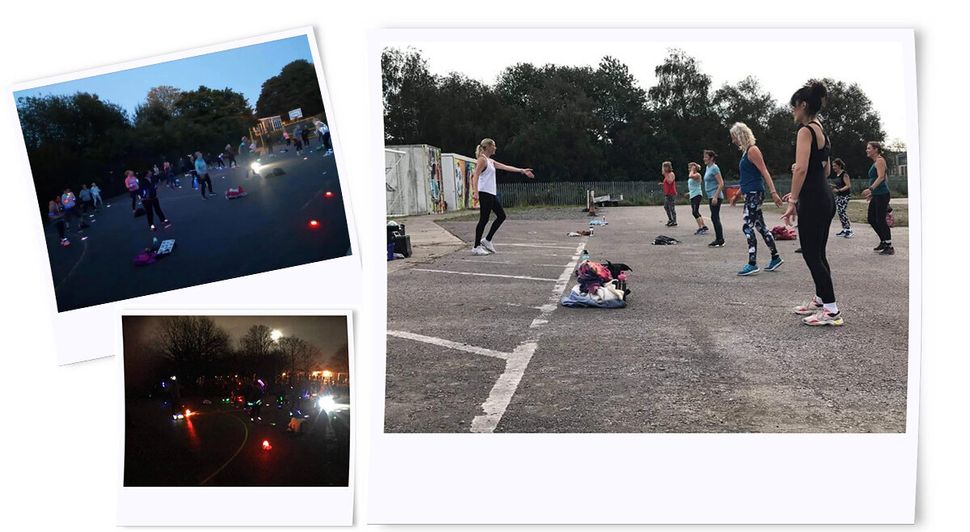
“It was lovely at first as the weather was delightful, but as it got darker we had to yet again adapt!” she says. “I bought glow sticks to use as place markers and a mirror ball with LED lights on it, then lots of disco balls and we all wear LED bracelets and fairy lights, light up hats, earrings, tutus and gloves.”
It’s been tricky to set up in the pitch black, but Searle has managed to acquire a bright workmen’s spotlight to help. The effort has been worth it.
“It’s great fun and even better that we can’t see each other, just lots of pretty lights, great music and a bit of singing laughing and whooping,” she says. “I’m really proud of all my Dance Fit gang for toughing it out in the wind and rain, although actually we have been incredibly lucky with mild weather.”
Searle’s business has so far survived the pandemic, but the year has been challenging for professional dancers, at a time when live performances have been almost obliterated.
As part of its Culture in Quarantine series, the BBC debuted a stunning video extract from Swan Lake in July, performed by prima ballerinas from around the world – in their bathtubs. It was gloriously creative, but with a serious point behind it. Many of the world’s leading dancers could not work.
In October, more than 100 ballet dancers joined a protest outside the Houses of Parliament in October, to call for better financial support from the government for the arts. Some of the dancers wore “I am Fatima” t-shirts – a reference to the controversial and now-removed government advert, which suggested ballet dancers should retrain in other fields.
The protest was attended by choreographer and former Strictly judge Arlene Phillips, who told The Stage: “Everyone in the performing arts is suffering from a loss of income, loss of respect, loss of performing, and most of all, the loss of the understanding that dance is a passion turned into a career only by years of punishing study harder than most athletes.
“Members from the industry are now being advised to change careers. Dance is my life, and it’s hard to watch as sharp, intelligent dancers are being rejected for a number of retail or support jobs as they are not considered to have the right skills.”
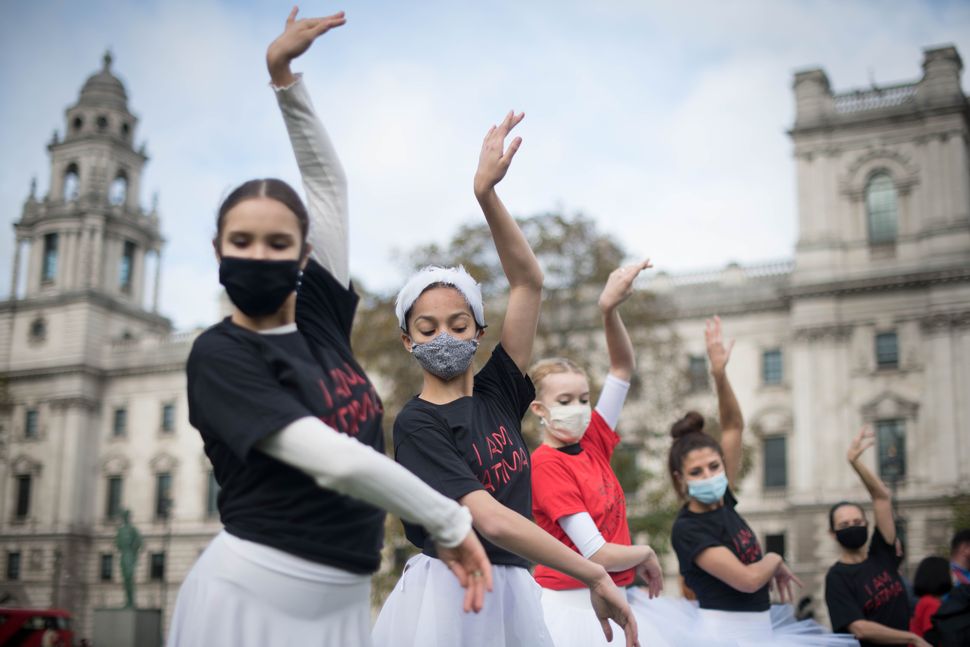
Things did look on the up by late October, when The Northern Ballet returned to the stage, in what was believed to be the first major UK dance performance in front of a live paying audience since lockdown began.
The company performed excerpts from a number of ballet classics, including Don Quixote, Swan Lake, Le Corsaire and Giselle at the Leeds Playhouse, but only a handful of other live performances have followed.
English National Ballet relied on a “digital season” with a series of five original dance films made available to rent during autumn, but the company had hoped to be back in the London Coliseum for an abridged version of The Nutcracker with socially distanced audiences by December. With London now in tier 3 – and theatres told they must close – it seems the show must go online, if it is to go on.
Velicu says being back in the studio and rehearsing for the show has been “quite surreal”. “Dancing with a mask is definitely not easy, it makes it very hard to breathe sometimes,” she says. “But I consider it only a little adjustment that allows us to keep doing what we all love.”
Lister Parsons has also had to adapt her business further to make her live online classes profitable and support the dozens of SOS teachers across the country.
She’s now launched ‘SOS On Demand’, with classes taught over Zoom, instead of Instagram Live. It costs dance fans £11.99 a month with a minimum of five new classes added every week.
Searle will continue to teach outside, while her clients are still enjoying the fresh air. And Lister Parsons will continue to build her digital dance business, as long as dancers ask for it. One thing is clear from both: the passion and community spirit among dancers is not easily broken.
“Our catch phrase for this year within our team is to ‘make lemonade’ (Beyoncé style), because 2020 has served its fair share of lemons,” she says. “It’s been a crazy year, but I am so proud of what the team and community have been able to build together.”
